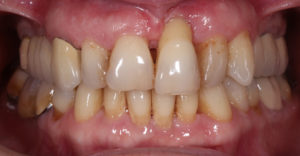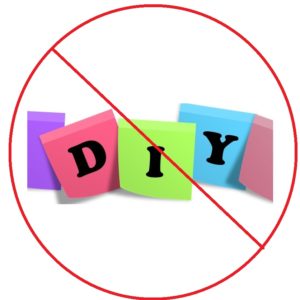How Do You Fix Gum Recession?
Receding gums used to be accepted as a fact of life. That’s where the phrase “getting long in the tooth” came from. Aging meant receding gums, so the teeth appeared “longer”. We now know that gum recession is not simply a fact of life. We can prevent it, and we can repair it!
What Causes Gum Recession?
There are several different causes of gum recession, and it is possible to have multiple causes even among different teeth in your mouth. It is important for you and your dentist to understand which causes may apply to you so that you can prevent further damage and relapse from any treatment.
Gum Disease
Gum disease, which we call periodontal disease, is the body’s response to toxins produced by the bad bacteria in plaque and tartar buildup. These toxins and the body’s inflammatory response destroys the surrounding jawbone and gums around an affected tooth. As gum disease worsens over time, the gums slowly back away from the tooth, exposing the roots.
Important Note: It is possible to have severe gum disease without gum recession. In cases of very deep gum pockets, the toxins destroy jawbone without its overlying gum tissue. This means that the gums can look relatively normal even in the presence of severe gum disease. Consistent dental visits with yearly gum measurements are necessary to rule this out!
Clenching and/or Grinding Teeth
Also known as bruxism, clenching and/or grinding of the teeth during sleep can do major damage to the teeth, the gums, and the jaw joints. Different people respond in various ways to the excessive forces of bruxism. Some have severely worn-down (shortened) teeth. Others show severe gum recession. Still others may have popping, clicking or locking in their jaw joints. Not everyone has the same signs and symptoms of this largely uncontrollable problem.
When you clench or grind your teeth, the higher-than-normal forces you place on them is often absorbed by the surrounding tissues rather than the teeth themselves.
Bad Tooth Position
Some people naturally have jaws that are too small for all of their teeth. When the permanent teeth begin coming into the mouth, they have to crowd together. When this crowding pushes a tooth out toward the lips and cheeks or in toward the tongue, it will not have enough jawbone and gum covering it on that side. This can happen as soon as the teeth come into the mouth or over time, as they crowd together more with aging.
Improper Orthodontic Movements
It is possible to cause gum recession by moving teeth too quickly or moving them outside of the established jawbone and gums. Orthodontic movement that is too fast does not allow the cells around the teeth to rebuild jawbone and gum tissue. In some cases of orthodontic movement, widening the smile (to show more teeth and give a better cosmetic appearance) can place the teeth outside (or to the cheek-side) of the jawbone. This predisposes them to gum recession. The teeth should remain within the jawbone.
 This is why we get a little stressed about DIY clear aligner therapy at home. Who made sure your jawbone was healthy enough to move the teeth? Who is ensuring the teeth will remain enclosed in jawbone so that you’re not at risk for future gum recession?
This is why we get a little stressed about DIY clear aligner therapy at home. Who made sure your jawbone was healthy enough to move the teeth? Who is ensuring the teeth will remain enclosed in jawbone so that you’re not at risk for future gum recession?
Wrong Brushing Technique
Interestingly, this is what most people assume causes gum recession. In actuality, it is pretty rare that someone brushes so improperly that they damage the gums. If anything, we see an improper brushing technique that completely misses the gums.
It is possible, though, to brush so aggressively that you damage the gum tissues. Using a hard-bristled toothbrush will contribute to this. If this is occurring, typically you will also have severe abrasion of the same side of the tooth itself. This will help your dentist distinguish this as the cause of your recession.
What Can You Do to Prevent Gum Recession?
Prevention of gum recession involves addressing all of the causes listed above.
 Prevent and treat gum disease with professional dental care. Take great care of your teeth with consistent oral hygiene at home, and don’t skip your professional teeth cleanings in our office.
Prevent and treat gum disease with professional dental care. Take great care of your teeth with consistent oral hygiene at home, and don’t skip your professional teeth cleanings in our office.- Protect against nighttime clenching and/or grinding by wearing a protective nightguard.
- Correct any improperly positioned teeth with orthodontics. The sooner in life you address this, the better.
- Ensure that a dental professional performs and closely oversees any orthodontic tooth movement. Do not DIY!
- Use only soft-bristled toothbrushes in a gentle, circular motion. If you need help with this, ask Phyllis and Nancy. They can coach you in the best brushing technique.
What Can You Do to Repair Gum Recession?
So what if you already have gum recession? The prevention techniques listed above are still important for you. They will help slow down any progression and improve the outcome of any treatment you have for the recession. The success of your treatment may depend on your compliance with recommendations for oral hygiene, nightguard wear, brushing techniques, etc . . .
Gum Grafting
The most common treatment to repair areas of lost gum tissue is gingival grafting. A “graft” of gum tissue from another area in the mouth covers the area of gum loss in this surgical procedure. The surgeon positions the healthy gum tissue in a way that covers the exposed roots and attaches it with small stitches. The surgery allows the receded gums to quickly incorporate the new gum tissue and heal smoothly.
This procedure not only provides cosmetic benefits. It returns the gums to a healthy position on the tooth. By covering the roots, you protect yourself from tooth sensitivity to hot and cold temperatures and sweets. You also lower the risk for cavities that are quick to develop on the weaker root surface (roots do not have a covering of enamel).
Gums heal quickly! The idea of this procedure may be intimidating to some. We do not intend to minimize it in any way. It is a surgical procedure, and you will have very specific post-operative instructions to follow. The important thing to remember is that the results are worth it!
More Questions about Gum Recession?
Call today to schedule a consultation with Dr. Ann and Dr. Lauren. They can answer any of your questions about gum recession, assess your specific situation, and help you choose the best treatment option to meet your own needs and desires.
